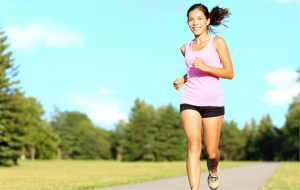How Exercise and Stress are Connected

What kind of activity do you do to feel better about yourself, that is also healthy? If your answer is exercise then you’re on the right track! People who don’t do any physical activity tend to diminish the importance of the benefits it brings.
Working out is inversely related to stress. In broad terms, exercising is an effective and healthy way to fight stress. Working out frequently can make us feel less stressed out.
We can say that an unmoving body is just like a dead body. A fatigued and sluggish child is considered to be an unhealthy child. Lack of exercise leads to poor health, making it hard to face extreme situations and promoting slow metabolism, low energy, a tendency to overeat, and the abuse of substances or medication.

The problems caused by stress
Excesive stress leads to poor health. When we go through long periods of stress, our body produces negative reactions to the secretion of hormones like cortisol.
Stress also reduces our energy levels. We get tired more easily. This promotes absence from work and laziness when it comes to chores and other activities. The personal cost of all this is immeasurable. Stress has been related to many coronary, gastrointestinal, psychological, respiratory, and immunological disorders, among others.
For example, chronic stress can greatly affect the cardiovascular system. The fine lining of the blood vessels can tear or get pierced.
If our stress gets worse, it can lead to more serious disorders such as hypertension, coronary heart disease, tachycardia, episodic cardiac arrhythmias, aneurysms, embolisms, etc. And this is only on the cardiovascular level.
That’s why we need to implement strategies to confront the issue. Working out is an excellent strategy to fight the negative effects of stress.

Doing aerobic exercise improves our health
Exercise is a somewhat vigorous activity that demands great amounts of oxygen. In order for your work out to benefit your cardiovascular system (heart and blood vessels), you must do moderate aerobic exercise for at least 20 minutes.
Aerobic exercise is a physical activity that doesn’t exceed the heart’s capability to take the right amount of blood and oxygen to your muscles. Aerobic means that it requires free oxygen.
The harder the workout, the higher the cardiac rhythm. If you make your muscles work too hard, your heart won’t be able to supply enough oxygen. At this point, you might reach an oxygen deficit and won’t be able to keep on doing the activity.
Exercise as an active relaxation method
There are two kinds of relaxation: active and passive. Passive relaxation is the one we do through exercises such as diaphragmatic breathing, progressive muscle relaxation, meditation, etc.
In contrast, active relaxation can be done in many ways, like running, jogging, walking, riding a bike, swimming, dancing, etc. In short, we can do active relaxation through exercise.
Active relaxation is better when it doesn’t involve a competition. In this case, it could become a source of anxiety. There’s a huge difference in running as a form of relaxation and running in front of other competitors in a 100-meter dash.

Exercise and stress
As mentioned before, exercise and stress are deeply connected. If we exercise frequently, we can keep our stress levels low.
Regular exercise will help us physically and mentally. We’ll burn calories and that will slow down the aging process. According to medical research, the benefits we can experience from exercising are the following:
Better sleep quality
If you exercise moderately, you’ll reduce adrenaline and noradrenaline levels, which will help you fall asleep more easily and have a more restful sleep.
Low cortisol levels have also been associated with better sleep quality. When we exercise moderately, we reduce the levels of this hormone.
Lower risk of having a heart attack
People who burn less than 2000 calories per week by not doing any physical activity are 64% more likely to suffer from a heart attack than people who burn more than 2000. And let’s not forget that stress is also a cardiovascular risk factor.
If we exercise moderately very often, we’ll burn more calories. Therefore, we’ll reduce the probability of having a heart attack.

A better physical shape gives us a greater ability to consume oxygen during exercise. This means that we have a lower heart rate while resting, lower production of lactic acid, and a visible increase in performance efficiency.
The more exercise we do, the lower our triglyceride levels will be. The relationship between high-density and low-density lipoprotein in the blood will improve. The low-density lipoprotein carries the cholesterol to other tissues, where atherosclerotic plaques can form.
A higher capability of facing stress-inducing factors
Research suggests that a greater flow of oxygen to the brain increases the availability of glucose. Glucose improves brain function. If we improve our brain function, we’ll feel less stressed out. Brain catecholamine levels reduce as a result of exercise and stabilize mood swings. This is very useful to also reduce feelings of anxiety and sadness.
To conclude, we can see that exercise and stress have a close relationship. A better physical shape helps us confront stress. Exercise makes us stronger physically and mentally, creating the sensation that we’re more capable of controlling what’s stressing us out.
All cited sources were thoroughly reviewed by our team to ensure their quality, reliability, currency, and validity. The bibliography of this article was considered reliable and of academic or scientific accuracy.
- Asztalos et al. (2012) ‘Sport participation and stress among women and men’, Psychology of Sport & Exercise. Elsevier Ltd, 13(4), pp. 466–483. doi: 10.1016/j.psychsport.2012.01.003.
- Weinberg, R. S., Gould, Daniel and Open University E233/Textbook (2015) Foundations of sport and exercise psychology. 6th ed.
This text is provided for informational purposes only and does not replace consultation with a professional. If in doubt, consult your specialist.








